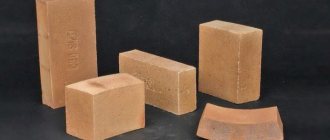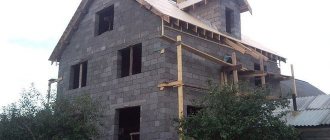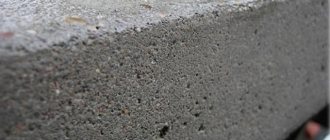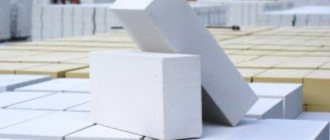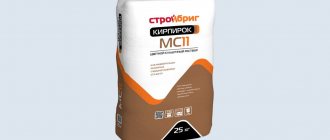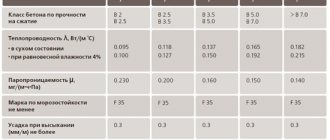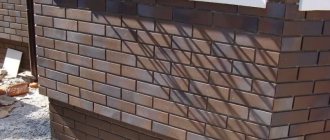According to tradition, a distinction is made between ceramic and silicate bricks. They are similar, perhaps, only in size, since both the materials and methods of manufacturing the material in these two cases are completely different. Ceramic bricks are molded from clay (usually with various functional additives) and fired. According to the definition of the explanatory dictionary, “brick” is a block of baked clay. Then silicate (that is, “not clay”) brick is not a brick at all, but some solid material similar in shape to brick. So it is: the characteristics of these two materials are regulated by different GOSTs and builders very clearly draw a line between them.
Ceramic brick has several varieties: building (aka ordinary, “ordinary”, “solid”), hollow (aka “economical”, “hole”, “slotted”, “self-supporting”), facing (facing), which has a lot of subtypes : façade, shaped, figured, glazed, engobed. Types of bricks can be combined. For example, facade bricks can be both hollow and solid, and shaped bricks can be both construction and facing bricks. According to the texture of the surface of the spoon and butt edges of the product, it can be smooth or grooved.
Ceramic material is also used for laying stoves and fireplaces. For those parts that are in direct contact with an open fire, fireclay (fire-resistant) brick is needed, and for finishing they take a “fireplace” brick - an analogue of a facing shaped brick. Paths are paved with clinker bricks.
There are two methods for making ceramic bricks: plastic and semi-dry pressing. In the first case, a clay mass with a moisture content of 17..30% is squeezed out of a belt press, then dried and fired. The second method is less common - the raw material is formed from clay with a moisture content of 8..10% by strong pressing; This material is not recommended for the construction of premises with high humidity.
What brands of brick and stones are produced?
The brand of brick or stone is an indicator that directly reveals the main characteristics of the product. In addition, marking is carried out taking into account state standardization to indicate additional qualities of the material.
- What does the brand of brick mean?
- Marking by type and characteristics
- Brick standardization
- Strength grade
- Frost resistance
- Use in construction
What does the brand of brick mean?
Marking is needed to indicate the type and characteristics of the material
GOST 530-2012 defines the main parameters of bricks and stones. Among these indicators, the following characteristics are taken into account:
- dimensions;
- strength;
- water absorption;
- frost resistance;
- fullness.
Each batch of building materials is marked using an alphanumeric code that contains information about the product. This allows it to be used in accordance with its intended purpose and operating conditions.
According to the manufacturing method and material, bricks are: K - ceramic, S - silicate, Sh - fireclay. They are used in various construction industries, for the construction of special parts of buildings, as well as in cladding and other works. They differ in the method of production and resistance to extreme temperatures and loads.
The most fragile and unsuitable for the construction of structures is sand-lime brick. Ceramic is the most common. This is due to its high reliability, resistance to loads, and temperature changes. However, these indicators may vary depending on the brand, as well as the presence of additional impurities in the composition.
Fireclay or special bricks are mainly used for masonry of structures exposed to extreme temperatures.
Marking by type and characteristics
The beginning of the marking indicates the type of product:
- KR - brick;
- KRG – brick with horizontal voids;
- KM – stone;
- KMD is an additional stone.
The scope of application is also indicated on the labeling. This can be P - ordinary brick, which is used for masonry, or L - face brick, used in facing work.
Additionally, the type is indicated:
- O – single;
- E – “euro”;
- M – modular;
- U – one and a half;
- IG – thickened with horizontal voids;
- K – stone, double brick;
- KK – large-format stone;
- KG is a stone with horizontal voids.
These markings indicate the dimensions of the product. The thicker it is, the easier it is to build walls from it. However, weight and cost increase with size.
The marking uses letters indicating the molding features: PO - solid and PU - hollow.
Solid brick has voids up to 13%. This does not allow it to be used as the only material for laying external walls. This state of affairs is associated with the increased thermal conductivity of the material. Hollow bricks have voids up to 45%. This allows you to improve thermal insulation performance and make the product lighter. However, the strength decreases. It is used for laying lightweight walls.
Brick standardization
A batch of bricks undergoes mandatory tests to ensure compliance with strength and frost resistance. As a result of these tests, a specific brand is assigned. To perform the test, 5 products are selected at random from the brick lot. Strength is determined by the maximum loads acting on the product. To test cold resistance, a brick is taken and soaked in water for 8 hours. After this, freezing is performed and the cycle is repeated until its characteristics change. The more cycles it withstands, the higher the marking.
Strength grade
The strength grade of brick is the most frequently considered issue, since this is one of the most significant indicators that allows the material to be used to perform certain tasks.
The strength grade of ceramic brick is determined by the flexural compression index. It is designated by the letter M, supplemented by a digital code indicating the level of load that an ordinary brick can withstand per 1 square centimeter. To date, 8 strength grades have been established - from 75 to 200 in increments of 25 and especially strong bricks - M-250 and M300.
There are special heavy-duty bricks that are used in critical construction. Within the framework of ordinary urban planning, such products are unclaimed due to their high price.
Frost resistance
This indicator indicates the product’s resistance to freeze-thaw cycles in moisture-saturated conditions. There are a large number of frost resistance markings - from F15 to F-300. The higher the number, the greater the number of complete freezing-thawing cycles the brick can withstand without damaging its structure. These indicators are extremely important when building in areas with extremely low temperatures.
For the middle zone, when constructing conventional structures, this indicator does not necessarily have to be maximum. Average values are enough for exterior decoration and lower values for interior decoration.
Use in construction
Marking allows you to determine the area of application of the brick. Ceramic is used in almost all areas of construction - laying foundations, plinths, partitions, external and internal walls. It is used for hand laying. To reduce the number of necessary raw materials when performing construction work and laying high-strength walls, especially large bricks can be used for high-rise buildings. This type of brick is the most widespread due to its ratio of reliability indicators and price. Its production technology consists of firing already molded products.
Sand-lime brick is made from a mixture of quartz sand, water and lime. After molding, the brick mass is subjected to autoclave treatment. It is exposed to steam and high pressure. Its main disadvantage is its heavy weight and high thermal conductivity, coupled with low moisture resistance. Sand-lime brick is most often used for the manufacture of load-bearing structures, but its low water and heat resistance does not allow it to be used for laying the inside of chimneys, as well as for erecting walls in rooms with high levels of humidity. This product is cheaper than ceramic.
Special bricks - fireclay, stove - are used as a material for laying stoves, fireplaces and internal parts of chimneys. Their feature is an increased level of heat resistance. They are capable of withstanding extremely high temperatures exceeding 1000 degrees Celsius without modification.
How to properly care for a facade with a facing brick surface?
The aesthetics of an external wall made of facing bricks can be spoiled by efflorescence - large whitish spots. Their occurrence can be avoided through measures taken at the stages of construction work and during operation:
- When carrying out masonry work, use non-additive Portland cement.
- Eliminate the presence of water-soluble salts in fine aggregate (sand) and water.
- When laying bricks with low water absorption, use only rigid masonry mortars.
- Work at positive temperatures, since the use of antifreeze additives is undesirable. Freezing of masonry is prohibited.
- Prevent masonry mortar from getting on the front surface of the blocks.
- After completing masonry work, cover the masonry with waterproof film every day.
If efflorescence does appear, you cannot wash it off with water or wipe it with a dry cloth. For this purpose, it is necessary to purchase a special composition that will not only remove existing efflorescence, but also prevent its further appearance.
Selection of wall materials: ceramic brick
Clay is one of the most ancient building materials. Even 10,000 years ago, in what is now Iraq, bricks were made , which hardened when exposed to direct sunlight.
And after 3,000 years, they began to use firing in ovens for this. Thus, a strong and durable material was discovered. Currently, clay products used in construction have only gained popularity. This happened not only because of their merits, but also because of the development of technology. One of these materials is ceramic brick , which is now actively used for the construction of walls of buildings and structures.
Types of ceramic bricks
To size:
- Single - dimensions 250x120x65 mm.
- One and a half - dimensions 250x120x88 mm.
- Double - dimensions 250x120x138 mm.
- Facing - dimensions 250x60x65 mm.
- Euro - 250x85x65 mm.
- Modular single - 288x138x65 mm.
According to production technology:
- rigid extrusion is a method of producing ceramic bricks that has become widespread abroad (in countries such as the USA, England, Canada, Saudi Arabia, etc.). Bricks using this technology are produced by pressing the starting material, which is based on highly plastic clay, through the molding holes of an extruder. Products made in this way have excellent quality and increased frost resistance.
- plastic molding is the most expensive method of producing ceramic bricks, which has become widespread in our country. The brick molding process is carried out using a special belt press and plastic clay with a moisture content of 18-23%.
- semi-dry pressing - a technology for producing bricks from low-plasticity clays with a moisture content of 6-8% using a high-pressure press (100-300 kg/cm 2 ). It is a cheaper way to produce ceramic bricks than plastic molding.
- dry pressing - the technology is almost identical to semi-dry pressing. The only difference is that the products are not pre-dried before firing.
By filling method:
- Solid - a brick that contains virtually no voids. It has good compressive and flexural strength. Therefore, such bricks are usually used for the construction of load-bearing external and internal walls, as well as columns and pillars. Its characteristics are most often the following: density 1600-1900 kg/m3, frost resistance grade F15-F50, thermal conductivity index 0.6-0.7 W/m·°C, strength grade M75-M300.
- Hollow - a brick containing in its structure several closed on one side or through holes of different shapes (square, round, oval, rectangular). Its main advantages are its comparative cheapness (it costs much less than a solid one) and good heat-insulating properties. The disadvantage is less strength compared to solid wood. Therefore, it is usually used for the construction of self-supporting vertical structures, that is, unloaded external and internal walls, as well as partitions. The main characteristics of hollow ceramic bricks are as follows: density 1000-1450 kg/m 3, frost resistance grade F15-F50, thermal conductivity 0.3-0.5 W/m°C, strength grade M75-M300.
By purpose:
- Ordinary - used for the construction of external and internal walls of buildings and structures, the further operation of which is carried out in natural conditions.
- Facing - brick used for finishing facades. Its other names: front or facade. It differs from the ordinary one in its smooth and precise edges, as well as a smooth surface. As a rule, such bricks are produced hollow. Therefore, its thermal insulation qualities are quite high.
- Glazed or engobed facing is a brick in the production of which glaze or engobe is used. The first material is a glassy powder, the second is white or colored clay, brought to a liquid state. These materials are capable of giving ceramic bricks a glassy glossy or opaque matte surface. This type of brick is used in cases where an original design solution is required.
- Clinker is a brick with increased strength, which is achieved by using refractory clays and higher temperatures than in the manufacture of conventional ceramic bricks. It is usually used for the construction of basement and plinth walls, cladding facades, as well as for paving roads and floors. Serious disadvantages of such bricks are high cost and increased heat transfer coefficient. Its main characteristics are as follows: density 1900-2100 kg/m3, frost resistance grade F50-F100, thermal conductivity index 1.16 W/m°C, strength grade M400-M1000.
- Fireclay is a brick that is used mainly for laying stoves and smoke shafts. It is characterized by increased fire resistance (the product can withstand temperatures of more than 1600°C). Such bricks are made from special refractory clay. Its advantages are its attractive appearance and variety of shapes (rectangular, wedge-shaped, trapezoidal and arched), but its disadvantage is its high price.
Required wall thickness
510 mm + 120 mm (380 + 110 mm)
250 mm + 30 mm (120 + 30 mm)
Note: The values shown outside the brackets are for ceramic bricks with a thermal conductivity index of 0.6 W/m·°C, in brackets are the values for hollow bricks with a thermal conductivity index of 0.3 W/m·°C.
Brickwork heights: prevention and maintenance
A respectable house with a facade made of facing bricks can change its appearance when efflorescence appears. Large white spots negatively affect the appearance. The likelihood of their occurrence can be reduced at the construction stage. To do this you need:
- use additive-free cement when making masonry mortar;
- sand and water should not contain water-soluble salts;
- when laying, use a “hard” mortar with little mobility;
- do not use antifreeze additives; it is better to carry out work in the warm season;
- do not allow the masonry mixture to get on the front surface;
- Every day, after work, cover the masonry with waterproof material;
- prevent freezing of the masonry during the construction phase.
If efflorescence appears, it is not recommended to wash it off with water or wipe it off. It is imperative to use special compounds. They will remove efflorescence, reduce the rate of its further manifestation, and will not cause damage to the facade brick.
Types and brands of ceramic bricks
Ceramic brick is made from clay and has a second name – red. The technology involves firing products at temperatures up to 1000°C, a process that lasts about a week. In addition to clay, the composition includes various additives that improve performance. It is used for cladding buildings, laying load-bearing walls, and also for fire insulation.
1. Frost resistance (F15-F100). It is marked with the letter F with a number, which indicates the maximum number of cycles of freezing and thawing of the brick without deformation.
2. Strength (M75-M1000). It is designated by the letter M with a number indicating the maximum load per 1 cm². It indicates the reliability, as well as the height of the building.
3. Density (1000-1900 kg/m3). Indicates the quality of the clay and the presence of air voids in the structure. Low density characterizes good thermal insulation, and high density characterizes the strength properties of ceramics.
conclusions
Cladding a façade with brick is a labor-intensive undertaking. But if you follow the technology, use high-quality bricks and additional materials, and use the services of professional builders, then such a facade will last at least 100 years.
If you want to learn more about brick facades, possible problems and ways to solve them, read our article.
FORUMHOUSE has a topic dedicated to the choice of facing bricks and experience in using brick facades.
Subscribe to our Telegram channelExclusive posts every week
Frost resistance of bricks
In the construction of a brick structure, the frost resistance of the brick is not the main, but significant factor influencing its choice, especially if it is used for laying external walls. Weather conditions are constantly changing, the temperature regime is not stable, which most exposes brick buildings to the risk of accelerated wear, cracks and a decrease in their service life.
Why is frost resistance important for brick?
The concept of frost resistance refers to the ability of a substance or material to withstand defrosting/freezing cycles without loss of properties: structural damage, deterioration of strength and the appearance of visible external damage. The fact that frost does not destroy dry bricks is taken into account. The structure of the material contains porous formations into which water enters, freezing during frost and destroying the stone, since in the ice state it occupies a larger volume than in the form of a liquid.
The frost resistance grade is designated by the letter F and a number. According to GOST construction standards, the following grades are distinguished: F15, 25, 35, 50, 75, 100, 200, 300. Frost resistance can only be correctly determined by testing in laboratory conditions. The technique is step-by-step and consists in the fact that the sample is first kept for 8-9 hours in cold water, and then placed in a refrigerator at a temperature of -20 degrees. At the end of each stage, the material under study is checked for the appearance of external changes. Thus, a sample labeled F50 means that this species can withstand 50 freeze/thaw cycles without deformation.
What does it depend on?
The frost resistance of a material is influenced by 2 factors:
- chemical composition;
- shape and size.
Return to contents
Material composition
Manufacturing technology is the first thing that affects the quality of the material. Companies producing building materials use equipment that changes production technology. In creating bricks, special dispersed additives are used that prevent the liquid from hardening. The second factor is the quality of raw materials. The better the clay and sand, the higher the resistance index: a sample made of kaolin clay is considered non-frost-resistant, and material containing a high content of quartz and calcium silicates has a frost resistance level 40% higher than ordinary.
Where can I buy
Today the construction market boasts a wide range of different bricks. They differ little from each other, since almost all manufacturers are guided by the same regulatory document. This happens if the requirements for raw materials and manufacturing technology are strictly observed.
Purchasing such products is also not a problem today; they are sold everywhere. But in order not to fall for the bait and buy a used brick or one whose characteristics do not meet GOST, it is advisable to purchase from trusted places.
Bricks of all brands at the best prices are presented in the MosKeram online store. Here you can find complete information about the product with all its characteristics and its manufacturer; there are certificates of quality and product compliance with Gosstandart requirements. MosKeram employees provide assistance in choosing the right building material and will tell you how to place an order and delivery at a time convenient for you.
Weight
The weight of a brick depends entirely on the degree of density, porosity, dimensions, and the presence of cavities. Weight of one unit:
- single solid bar – 3.3-3.6 kg;
- hollow brick - 2.3-2.5 kg;
- one and a half hollow element - 3.0-3.3 kg;
- one and a half full-bodied - 4.0-4.3 kg.
When calculating the difference in weight of material of solid and hollow varieties, it can be done according to a simplified scheme, using average mass indicators. In accordance with this, the conditional weight of a product with parameters 250×120×65 mm:
- solid with voids up to 13% - 4 kg;
- hollow with voids above 15% - 2.5 kg.
With other dimensions, the weight of one hollow brick will be different:
- 250×85×65 mm – 1.7 kg;
- 250x120x88 mm – 3.1 kg.
Knowing the weight of one unit of a block allows you to accurately calculate the required mass of a pallet or cubic meter of brickwork. For example, 1 m³ of masonry, which consists of 500 pieces of solid bricks, weighs 1690-1847 kg. In addition, one m³ contains:
- 7 rows of double bars in the amount of 200-240 pieces;
- 10 rows of thickened one-and-a-half bricks, numbering 380 pcs.;
- 13 rows of single pieces.
Porosity
Indicates the level of saturation of the pores of the brick structure as a percentage, and can directly affect the indicator of frost resistance, thermal conductivity, and strength. To improve the quality of pore formation, additives are included in the clay component - sawdust, peat, chopped straw, coal. These materials fall into the category of completely burning out when fired, so they leave behind many small voids. Porosity is also not a constant value, so for clinker bars the minimum level is 5%, and for facing bars it is 14%.
Slag or slag-pouring house
Brick cladding in the case of buildings using slag is used more often when cracks spread along the walls. This happens mainly when the slag has exhausted its resource and began to crumble. On average, its service life is 50 years, it is reduced if the humidity of the walls is high.
Brick cladding of a cinder block (cinder block) house will only delay the inevitable: it will slow down the destruction, but will not stop it. The duration of the delay depends on the condition of the material and the measures taken. On average he is 8-15 years old. It is hardly possible to do without consulting a specialist: the cost of a mistake is too high.
In most cases, it is recommended to build a frame around the house, on which to transfer part of the load of the floor and roof, and carry out waterproofing work. One of which is the external protection of walls from precipitation using brick cladding. The brick is selected with the lowest water absorption. For greater protection, the masonry can be impregnated with a hydrophobic compound (but does not create a vapor-proof film). Penetrating hydrophobic impregnation of the main wall will not be superfluous. To do this, you can use impregnations such as “Penetron” and analogues. They will simultaneously strengthen the material and significantly reduce water saturation.
Watch the video about the practice of facing old buildings with bricks.
Clinker
Photo: clinker brick
Brick for cladding plinths, facades, as well as laying floors in industrial buildings, paving sidewalks and roads. It is highly strong and durable, since its production uses special refractory clay, which is fired at a significantly higher temperature than bricks produced using classical technology. Strength corresponds to M400-M1000, high frost resistance (withstands 50-100 freeze-thaw cycles). However, it has a high cost, as well as increased thermal conductivity, which is due to the highly dense texture of the raw material.
Water absorption
This term refers to the ability of brick to absorb and retain moisture. The level of water absorption is determined as follows:
- The dry block is immersed in water and kept for about 38 hours.
- Then they are pulled out and weighed.
- The difference between dry and wet weight is the amount of liquid absorbed by the brick.
- This value is converted into a percentage to obtain the level of moisture resistance.
According to GOST, a high-quality solid material has a moisture absorption no higher than 8%, and a hollow material – no more than 6%.
Brick facade cladding technology
1. Preparing the wall. First of all, you should prepare the work surface by removing all excess from it and cleaning it from dust.
2. Laying the insulating layer. If it is necessary to additionally insulate the walls of a home before finishing the facade, specialists use mineral wool, polystyrene foam, polystyrene foam or any other insulating material. It is attached to the wall using anchors, which at the same time will connect the load-bearing wall and the facing brick. And the top of the insulation must be covered with a vapor barrier film.
3. Preparation of the solution. After preparing and insulating the wall, it is necessary to prepare a solution. It must comply with the recommendations of the facing brick manufacturer, because if it turns out to be less tenacious, the heavy brick will simply begin to slide down. Moreover, in the future you may also have problems, because due to poor-quality mortar, bricks may fall off.
To get a mortar of grade 100, simply mix 1 part M400 cement with 4 parts river sand. And to make the solution elastic, you can add 100 ml of detergent to the composition.
If you need a stronger mortar of grade 200, combine 1 part of M400 cement with 2 parts of sifted sand.
Important! To ensure the quality of the solution, experts lay out literally 1 m² of cladding on the wall. The data obtained will allow you to strengthen the solution if it does not perform well.
4. Brick preparation. Many people miss the point that bricks also need to be prepared before laying. It is necessary to remove dust from its surface, and moisten the surface on which the solution will be applied with water. If you ignore this point, dry brick will quickly absorb moisture, which will lead to sudden drying of the mortar. In this case, the brick may simply fall off.
5. Laying bricks. This is the most crucial moment. It is better if it is carried out by an experienced specialist. Before starting work, he will lay out the bricks in the chosen masonry along the entire base to determine how many bricks will have to be cut or divided in half.
Important! For cutting brick, it is best to use a grinder with a diamond blade.
Having decided on the number of bricks, the specialist lays the first row of bricks on the plinth, after which he checks the uniformity of the masonry along all axes. Next, the corners of the building are laid out to a height of 5-7 rows. This is necessary in order to stretch the cord between the rows and control the horizontal position of the elements being laid. Otherwise, your masonry will be crooked.
Important! When laying bricks, it is important to ensure that the gaps between the bricks are the same, approximately 8-10 mm. In this case, after installation, each element must be lightly tapped with a rubber hammer so that it falls into place.
As soon as the masonry of the walls is level with the corners, you should again lay out the corners in 5-7 rows, and then start working on the flat walls.
6. Grouting joints. The masonry should be completed by grouting the joints, which is done using a grout mixture and special tools. Experts advise purchasing such a mixture together with facing bricks so that it matches the overall color scheme.
Having completed the grouting, and, if necessary, jointing the brick, do not forget to wipe the lined surface with a damp cloth to remove particles of cement and grout mixture that have fallen on the front surface.
